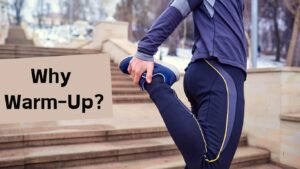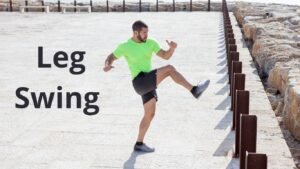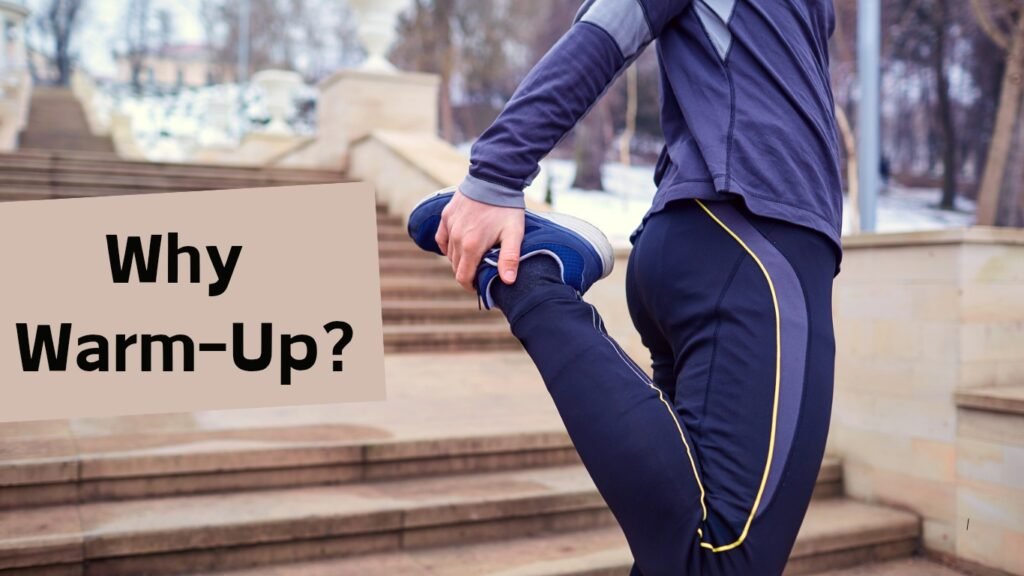Proper mountain biking warm-up is very important for your body. Unfortunately, many people, especially beginners, overlook it.
It is needed because MTB riding is a physically demanding sport, so you will need strength and power to tackle various trails, and it will involve your muscles and joints.
Therefore, with warm-up exercises, you can focus on opening your joints, primary muscles that are usually involved in mountain biking, such as legs, hamstrings, feet, neck, back, etc, and elevate your heart rate.
In this article, we will talk about some mountain bike warm-up exercises, including dynamic stretches like leg swings, arm circles, lunges (both front and back), and many other exercises.
If you even spend 10-15 minutes on warm-up, you can avoid many mountain biking injuries and boost your performance.
On the other hand, if you skip a proper warm-up, you might face problems like aching legs, stiff joints, etc. So now let’s know about seven effective warm-up exercises for mountain bikers.
Also read: 4 Weeks mountain bike training program for beginner
Why Bother with a Warm-Up?

Warm-up is important for almost every sport, be it football, basketball, cricket, or mountain biking.
I noticed one thing while trail riding in winter: when I didn’t warm up, I couldn’t grip the handlebars properly, which increased the injury’s chance.
Therefore, the first reason why you need to do a warm-up is because it helps you loosen stiff muscles and joints for better movement.
So, when your body is warm, it can move more effectively and will allow you to react better on sudden shifts, which we usually get in technical sections or forest rides.
For better Blood: The second reason why warm-up is important for mountain biking is because it increases the blood flow and oxygen level, which is important for muscles as it allows you to ride longer.
When the blood flow is good, then the blood can drive more nutrients to your muscles so that you can perform better without getting fatigued or tired, especially before a longer ride; you can’t skip this warm-up.
For better stability, warm-up also activates and stabilizes your core, even though there are dedicated core exercises for MTB riders.
Lastly, warm-up sharpens your mental focus so that you can quickly react to trails. And tackle any obstacles that we usually get on technical trails.
Also read: How to buil Stamina for Mountain Biking
1. Dynamic Leg Swings – Loosen Up Those Hips

All dynamics exercises are good for mountain bikers, especially the leg swing, which helps you improve flexibility and prevent stiffness during climbing.
How to do it:
- Hold onto your bike or a sturdy object for balance.
- Swing one leg forward and backward 15 times.
- Then swing the same leg side-to-side 15 times. Switch legs.
Why it works: It mainly targets your hip muscles, as they are the powerhouse of your pedaling. So if you loosen them up, you will feel better.
Besides this, dynamic leg swings will also prepare your muscles for more explosive movements, which you will need for climbing, trails, or flyovers or to change quick direction.
Also read: Best strength training exercises for Mountain biking
2. Standing Hip Circles – Prep for Technical Moves

Have you ever tried to navigate tight switchbacks and felt your hips freeze up? Hip circles fix that.
How to do it:
- Stand with feet shoulder-width apart.
- Place hands on hips and rotate slowly in circles—10 times clockwise, then reverse.
Why it works: Standing a hip circle is important for your lower back, and it also targets the pelvis muscle. These muscles and joints are really important on rough trails.
Besides this, the hip circle exercise also improves your mobility, which helps you navigate rocks and roads.
Plus, when you increase the range of motion, you can also reduce injury chances.
Also read: How to build core strength for MTB riders?
3. Arm Crossovers – Upper Body Activation

Your arms do more than steer—they help you balance the bike, break, and handle bumps.
How to do it:
- Swing your arms out wide, then cross them in front of your chest, alternating which arm is on top.
- Repeat 20 times.
Why it works: Arms and shoulders are very important for biking as you will handle too much from them.
That’s why, for upper body activation, you would want to do an arm crossover exercise for warm-up.
It will open your shoulder and chest muscles, which will give you better control over technical terrain and reduce aches if you want to ride longer.
Besides this, arm crossover exercise is also helpful if you want to ride on decent terrain and tight maneuvers.
So, to avoid all these things, including stiffness and soreness in the upper body, you can’t overlook the arm crossover exercise.
4. Bodyweight Squats – Fire Up Your Legs

Legs are an engine for mountain bikers and cyclists, so you need to warm up before hitting the pedals.
How to do it:
- Stand with feet shoulder-width apart.
- Lower into a squat, keeping your chest up.
- Push through your heels to stand up.
- Repeat for 15–20 reps.
Why it works: Bodyweight squats are a very simple but effective exercise that prepares your quads, hamstrings, and glutes for steep climbings and rough terrain.
Besides this, the bodyweight squat exercise mimics pedaling, so it will prepare you mentally, too.
Additionally, it will improve leg power and coordination, which is important to maintain momentum on technical trails.
Plus, if you engage all of your leg muscles, you will also have better posture while riding a bike.
Also read: Effective Ways to Boost Endurance for Riding A Bike?
5. High Knees and Butt Kicks – Boost Heart Rate

Think of this as hitting the gas pedal before the real ride.
How to do it:
- Jog in place with high knees for 30 seconds.
- Switch to butt kicks for another 30 seconds.
- Rest for 10 seconds, then repeat twice.
How it works: High Knees and Butter Kicks exercise is important to warm up your heart and lungs and prepare your legs and core as well, which provide better stability.
This exercise, just like squats, also mimics the paddling movement so that your muscles are primed.
On the other hand, increased heart rate helps your body to transition from a resting state to an active one.
6. Lunges with a Twist – Core and Balance Training

You’ll face uneven trails, so get your balance dialed in beforehand.
How to do it:
- Step forward into a lunge.
- Twist your torso toward your front leg
- Step back and repeat on the other leg.
- Do 10 reps per side.
Why it works: As I have mentioned a couple of times, the core is very important to have balance on the bike.
Therefore, you would want to do twist exercises along with lunges to target your legs, glutes, etc., and they will help you navigate obstacles.
The twist will activate your thoracic spine, which will help you maintain flexibility in the upper body, which is important when you want to move quickly and effectively on technical trails.
7. Standing Calf Raises – Build Lower Leg Strength

Your calves take a beating, especially on descents.
How to do it:
- Stand with feet hip-width apart.
- Rise onto your toes, then lower slowly.
- Repeat for 20 reps.
Why it works: It’s pretty common to get a cramp in the calf, so you want to do calf raise exercises to prepare for them, especially before climbing or descending steep trails.
If you warm them up, you can prevent fatigue and injury chances. Plus, the calf raise exercise will improve your pedaling techniques as it will enhance the pedaling stroke efficiency.
Bonus Tips for Peak Performance
Warm-Up Ride – Start Slow
When you are riding on a flat or mellow trail, I recommend you to ride slowly for at least 5 to 7 minutes. It will allow your body to get warm a little bit and prepare.
By riding slowly, you will also build up some rhythm, and your muscles will fully awake. Furthermore, the blood flow will also increase.
Hydration Station – Don’t Forget the Water
Before any ride, many people forget to drink water, or they simply avoid it because they don’t think it’s really important, especially when they don’t feel truly thirsty.
However, I recommend you drink water to hydrate yourself properly. Even if you are not feeling thirsty, you can take a sip.
Plus, you want to carry a water bottle or a hydrogen pack, which you can also mix with electrolytes (Optional) if you are going on a longer ride.
When you are properly hydrated, you can perform best without getting tired too quickly.
Plus, I have also noticed one thing: most people get cramps in their calves when they are not hydrated.
So, make it a habit to have a sip of water before every ride. It’s equally important as warm-up.
Listen to Your Body – Avoid Overdoing It
You want to do some light exercises and stretches to warm up your body before mountain biking. But it doesn’t mean that you do it so much that you start feeling executed.
While doing a warm-up, if you feel off, like you have tight knees, a sore back, etc., you can spend more time stretching rather than doing other exercises.
Do not push yourself too hard during the warm-up, as it can also cause a strain.
Final Thoughts: Make Warm-Ups Part of the Routine
Many of the beginners skip warm-up and directly start riding their bikes, which is not a good thing. It’s like you are riding a bike which does not have brakes.
However, you can just spend 10 to 15 minutes preparing your body for a ride.
Simple stretches and exercises like shoulder rotations, leg-spinning, and riding your bike slowly for 5 to 7 minutes before jumping onto the trail, etc.
If you follow all these tips that we have discussed throughout the article, you will notice the difference; you will feel more energetic, especially if you have eaten something and hydrated yourself properly at least 30 minutes before a ride.
What are effective dynamic stretches for mountain biking?
Some of the most effective dynamic stretches for mountain bikers are leg swings which you can do forward, backward, and side to side, arm circles, trunk twists, lunges with twist, high knees with butt kicks, etc.
They will help you warm up your legs, which are important for paddling and handling everything in mountain biking, and your core, which is important for balancing and stability in the upper body.
You can perform 15-20 reps or do each exercise for 30 seconds.
Besides this, you can also do full-body movement exercises such as standing toe touches, gentle torso rotation, etc. I personally love bodyweight squats as they also mimic paddling.
How long should I warm up before mountain biking?
You can do warm-up as long as you don’t start feeling warm in your body.
Generally, it can take anywhere from 10 to 15 minutes. But you want to do these exercises at least 10 minutes before the ride.
After warm-up, you want to rest for a few minutes. You can do dynamic stretches for 5 minutes.
And 2 to 3 minutes cardio like high knees or butt kicks. Then, do 3 to 5 minutes of slowly riding your bike to prepare your muscles and joints.
What should I do after mountain biking?
When you have done mountain biking, you need to cool down yourself; you can do some static stretching for your legs, hips, and back, then hydrate yourself and refuel with rich protein snacks.
Besides this, you can also consider foam rolling to reduce any muscle stiffness.
These simple things will help you recover fast and prepare you for the next ride.

Ali is the founder of Mountain Bike Insider and an passionate rider with years of hands-on experience in mountain biking. From testing gear to exploring trails, Ali writes based on real riding knowledge to help others make smart, safe, and enjoyable biking choices. Every guide is built on research, personal use, and a passion for the sport.







